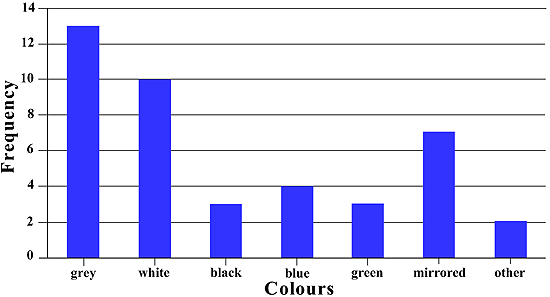Building colours
This task is about identifying whether statements about a graph are true or not.
Colours of office buildings seen in Wellington

Students at Swan Primary were doing a project on building colours. On a trip to Wellington they noted the colour of the office buildings they saw along two streets. They made the following comments about what they thought their graph showed.
Select "yes"next to each statement that is correctly based on the students' data. Select "no" if it isn't.

